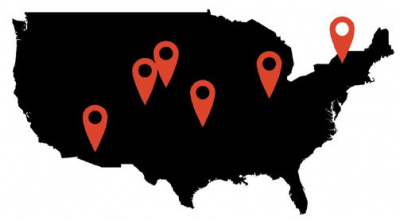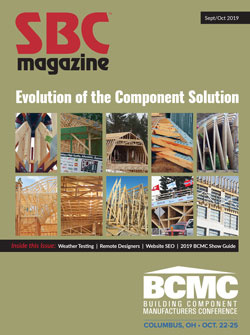What’s It Like to Be a Remote Truss Designer?
What’s It Like to Be a Remote Truss Designer?
We’ve talked a lot about how you can integrate remote designers into your truss design department, from the technology you’ll need (March 2019) to the ways you can make them truly feel like they are part of the team (April 2019). But what is it like to actually be a remote designer? Casey Carey, V.P. of manufacturing at Builders Warehouse Manufacturing, spent some time with each of his remote designers to find out.
Being a remote employee in any capacity comes with pros and cons but what Casey found out is that his team members really enjoy their jobs and the perks that come along with working remotely.

Builders Warehouse Manufacturing has remote designers across the country, giving them access to excellent designers in the U.S. without the cost and challenges that can go along with relocating.
“I feel so much more productive because I don’t get interrupted as much,” said John. And the interruptions are just one reason for the added efficiency. Bruce noted that in addition to fewer interruptions, not having to commute to work adds to his productivity. While his office-bound coworkers are stressed out in traffic, he’s starting his work day at home. (And it saves on the gasoline bill, too!)
Several of Casey’s designers noted that the trust they are given makes them feel like a valued part of the team. And a scheduling system that all of the designers can see makes it clear to everyone how much the company relies on them to get the work done, at home or in the office.
Scott pointed out that even when he feels a little like he’s on an island, he knows his team is just a phone call away. “It’s important not to assume how things are going,” Scott advised. “But it’s really easy to pick up the phone and make some calls.” Scott also noted that as a single parent being a remote designer has “helped tremendously.”
Not surprisingly, the main thing the guys cited as a downside was missing the in-person communication in the office. “I miss the interaction with the customers that come in,” Spencer said. “And I miss going out to jobsites to see my computer work come to life.” Spencer also noted that if he eventually wants to “grow into a management position,” he may need to reconsider working remotely.
But generally, Casey received resounding positive feedback from his remote team. They agree it takes discipline but these guys love the flexibility and focus time. “Rating it from one to ten,” said John, “I give being a remote designer a 10!”
Casey’s design manager, Craig Overturf, reiterates how much “easier it is to recruit from a larger pool of quality designers.” In addition, allowing designers to go remote when they need to relocate has been a fantastic option for Builders Warehouse Manufacturing.
“Trust is a huge issue when we are interviewing or considering a remote designer,” Craig notes. But he also understand that trust goes both ways and his designers need to trust him and the company as much as he trusts them. Tracking metrics on a daily basis helps maintain that trust in both directions; a topic we’ll explore in a future remote designer article. “At the end of the day, the designer and the company have to care about each other,” Craig concludes.

